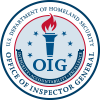Although the Federal Emergency Management Agency (FEMA) worked with its strategic partners to deliver critical medical supplies and equipment in response to COVID-19, FEMA did not effectively manage the distribution process. Specifically, FEMA did not use the Logistics Supply Chain Management System (LSCMS), its system of record for managing the distribution process, to track about 30 percent of the critical medical resources shipped, as required.
Open Recommendations
| Recommendation Number | Significant Recommendation | Recommended Questioned Costs | Recommended Funds for Better Use | Additional Details | |
|---|---|---|---|---|---|
| 2 | No | $0 | $0 | ||
| We recommend the FEMA Administrator take action to develop and improve the Logistics Management Directorate’s internal controls, guidance, and system integration to obtain more accurate information that enhances logistics decision making regarding the fulfillment of commodity requests during disaster response operations. At a minimum, FEMA should: a. develop internal controls to ensure appropriate information related to facility types, intermediate locations, and transportation-only orders is accurately reported in the Logistics Supply Chain Management System or an alternative integrated solution; b. update guidance and deliver training to ensure there is a clear audit trail when aggregating distribution data on FEMA-owned commodities, supplies, and equipment as well as those sourced by FEMA from partners across the Federal Government, non-governmental organizations, and the private sector to fulfill state, local, tribal, and territorial requests; and c. improve integration between the Logistics Supply Chain Management System and the Web Emergency Operations Center Crisis Management System to ensure the systems are, to the extent practicable, compatible and share information as required by the Post-Katrina Emergency Management Reform Act of 2006. | |||||
| 3 | No | $0 | $0 | ||
| We recommend the FEMA Administrator issue guidance and ensure a standardized process for collecting and maintaining documentation to confirm delivery and receipt of FEMA-owned commodities, supplies, and equipment, as well as those sourced by FEMA from partners across the Federal Government, non-governmental organizations, and the private sector to fulfill state, local, tribal, and territorial requests. At a minimum, the guidance and standardized process should: a. identify the required types of documentation to confirm delivery and receipt such as signed bills of lading, packing slips, and other forms; b. include controls to ensure the shipment documentation includes item descriptions and the specific quantity of items delivered and received; c. clarify the procedures for executing and documenting the delivery of commodities, supplies, and equipment to locations where no FEMA personnel are present to receive shipments; and d. establish appropriate repositories for delivery and receipt documentation. | |||||


